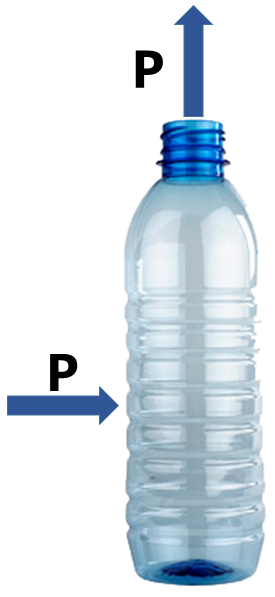Pascal's Principle
Pascal's principle states that a change in the pressure applied to an incompressible fluid is transmitted equally in all directions throughout the fluid.
This means that any change in pressure at one point in the fluid is transmitted undiminished to all parts of the fluid and to the walls of the container. This principle is fundamental in the design of hydraulic systems.
Common applications of Pascal's principle include hydraulic presses, hydraulic brakes in vehicles, and hydraulic lift systems. In each of these cases, a small force applied over a small area is converted into a much larger force applied over a larger area.

Force over Area Formula
The pressure in a fluid is defined as the force applied per unit area:
Formula: P = F / A
Where:
- P is the pressure (Pa).
- F is the force (N).
- A is the area (m²).
To calculate the force on a piston with a different area, we use:
Formula: F2 = (F1 * A2) / A1
Practical example: Apply a force F1 = 100 N on a piston with A1 = 0.01 m². The area of the second piston is A2 = 0.1 m². The generated force is:
Pressure: P = F1 / A1 = 100 N / 0.01 m² = 10,000 Pa
Force on A2: F2 = P * A2 = 10,000 Pa * 0.1 m² = 1,000 N
This demonstrates how pressure is used to amplify the applied force.
So basically, we can have a not-so-large force, but if the pressure point is small, it can cause a significant impact on the object.
This is applied in everyday life, for example, in knives, where sharpening the blade aims to make the pressure point as small as possible so that a small force can cause significant damage.
History of Blaise Pascal
Blaise Pascal was a French mathematician, physicist, and inventor from the 17th century. He was born on June 19, 1623, and died on August 19, 1662. Pascal is known for his fundamental contributions to mathematics and physics, including the principle that bears his name.
In 1647, Pascal began working on the theory of fluid pressure. His research led to the development of Pascal's principle, which states that any change in pressure in an incompressible fluid is transmitted uniformly in all directions.
In addition to his contributions to physics, Pascal also made significant advances in probability theory and developed the first mechanical calculator, known as the Pascaline.
